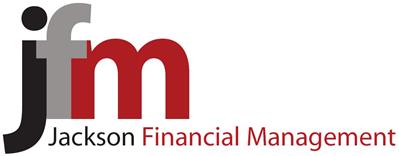By Flying Solo contributor, By Kelly Exeter
So you’re completely flat out yet have cash flow problems and never seem to have money in the bank. Where are you going wrong? Kelly Exeter has a few ideas (from experience).
Seven years ago my graphic and web design business was growing at a mad rate. My three staff and I were all ‘head down, bum up’ from the time we entered the office right up to when we left each day and I was also working stupidly long hours on weekends to keep up.
Yet we never seemed to have any money in the bank. Cash flow problems were ever-present and I spent a huge amount of time stressing about whether I’d be able to pay bills and wages each week.
Where were we going wrong? These three main places:
“Like many people in service-based businesses, I was charging an hourly rate and the client only paid for the time we spent actually working on a job. “

1. An unviable business model
Like many people in service-based businesses, we were charging an hourly rate and the client only paid for the time we spent actually working on a job. Not for the time spent:
-
Quoting and providing different options.
-
Answering questions (which is effectively consulting).
-
Going back and forth on email about proofs and changes.
Not only that …
You’ve probably heard this story about Picasso. While sketching on the street one day a woman recognised him and begged him to do her portrait. He completed it quickly, she asked how much and he said $5,000. “But it only took you five minutes!” she exclaimed, to which he replied “Madame, it took my entire life.”
Unlike Picasso, as we got more efficient at actually doing the work, we charged less. Sometimes a client would get a logo design from us for $200 because we managed to nail it in a couple of hours. Yet the only reason we were able to nail that logo design in such a small amount of time was because of our extensive briefing process (refined over several years) and our abilities as designers (also refined over several years). If we had poorer processes and took longer to come up with our designs, we could have charged more. Crazy!
How we fixed it: We changed our logo (and website) design pricing away from a ‘by-the-hour’ structure to a flat rate structure – we started charging for value rather than hours. The flat rate covered the time we knew we’d spend going back and forth with a client regarding their requirements, the expertise we brought to the table (ie the ability to know which questions to even ask) and finally, the time we took, on average, to deliver a quality design.
2. No recurring income
In the very early days of the business I had several clients on retainer. They paid a flat rate every month and this covered all their design requirements. For the most part, it was a great arrangement for both them, and us. In some months, however, the workload from our retainer clients was so high it left little time to do work for ‘pay-as-you-go’ clients. So in the end, we moved everyone to the pay-as-you-go arrangement.
Big mistake.
Yes, having retainer style relationships with clients can mean that in certain months your workload explodes, but knowing there is a guaranteed sum of money coming into your bank account each month is worth the odd stressful month here and there.
How to fix it: Retainer style arrangements aren’t the only way to have recurring income. You can also run an evergreen online course, have monthly live events, write a book, create a membership site or develop some software-as-a-service (saas). No matter which way you decide to go, having recurring income coming into your business is essential for ensuring there is always money in the bank.
3. Bad invoicing systems
Boy oh boy – did I use to have some poor invoicing practices!
First of all, if something took me less than 15 minutes, I never charged for it. To me, it was a nice thing to do for my clients. Unfortunately, I quickly found myself spending whole days doing sub-15 minute jobs for a bunch of different people … and charging for none of that time.
Secondly I used to invoice once a month, at the end of the month. This meant if a job finished on 1 May, it wouldn’t be invoiced until 30 May. That’s 29 days without payment.
Thirdly we used to have 30 day payment terms. See that job that finished on 1 May? The client had until 30 June to pay it. So now it could be up to 60 odd days before receiving payment for that particular job. And that’s if the client paid on time. If they didn’t, it could get out to 90 days before we received payment because I didn’t have time to chase up unpaid invoices until the end of each month.
How to fix it: I go into more detail here but the major things we did were:
-
Created a minimum job charge for jobs that took less than one hour.
-
Started invoicing jobs as soon as they were finished.
-
Shortened our payment terms from 30 days to 7 days. (Can you walk out of a restaurant without paying for your meal? No? Then it’s not reasonable to hand over artwork or a printed flyer to a client and then wait 30 days for payment.)
-
Started sending payment reminders for invoices the day they crossed into ‘overdue’.
-
Started taking a deposit for larger jobs.
-
Created payment terms that applied to everyone (including friends).
-
Communicated our payment terms very clearly to new clients; and the reasons for the change in terms very clearly to existing clients.
It’s very disheartening to be working your butt off day in, day out and not see this reflected in your bank account. I hope the above has provided you with some food for thought, and also some very practical ideas you can activate quick smart to help with any cash flow problems.
For further assistance please contact us on Phone 02 9906 6566
Source : FlyingSolo September 2018
This article by Kelly Exeter is reproduced with the permission of Flying Solo – Australia’s micro business community.Find out more and join over 100k others
Important:
This provides general information and hasn’t taken your circumstances into account. It’s important to consider your particular circumstances before deciding what’s right for you. Any information provided by the author detailed above is separate and external to our business and our Licensee. Any information provided by the author detailed above is separate and external to our business and our Licensee. Neither our business, nor our Licensee take any responsibility for any action or any service provided by the author.
Any links have been provided with permission for information purposes only and will take you to external websites, which are not connected to our company in any way. Note: Our company does not endorse and is not responsible for the accuracy of the contents/information contained within the linked site(s) accessible from this page.



